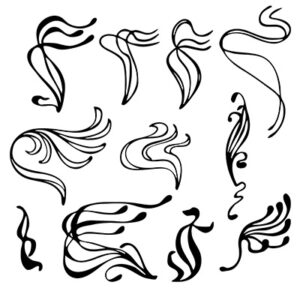 Conceiving bodily motions as lines in space allowed Laban to link his visual art background with his study of dance.
Conceiving bodily motions as lines in space allowed Laban to link his visual art background with his study of dance.
Art Nouveau artists not only had a deep interest in the expressive qualities of line, they also linked this expressivity to the body. For example, in asking how architectural forms can convey an emotion or a mood, the Swiss aesthetician Heinrich Wolfflin, argued that “Physical forms possess a character only because we ourselves possess a body.”
The architect August Endell went even further in ascribing empathic, body-based reactions to straight and curved lines, thick and thin lines, and the direction of the line. He believed that “because all sensations are only tempo and tension, form is able to awaken all shades of emotion within us.” Using quick and slow tempo and light and strong effort, he elaborated a range of moods that could be conveyed by the combinations of different kinds of lines and directions that were not remotely representational.
Perhaps Endell’s 1897 essay planted the seeds that flowered into Rudolf Laban’s theory of effort/shape affinities.
Find out more in the upcoming MoveScape Center course, “Harmonies of Effort and Shape: An Experimental Workshop.”
